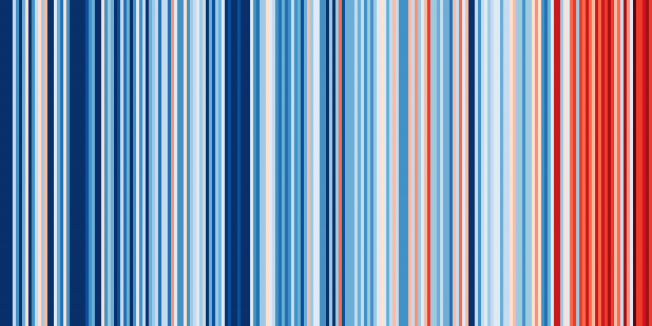Probabilistic prediction of climate using multi-model ensembles: from basics to applications.
Philos Trans R Soc Lond B Biol Sci 360:1463 (2005) 1991-1998
Abstract:
The development of multi-model ensembles for reliable predictions of inter-annual climate fluctuations and climate change, and their application to health, agronomy and water management, are discussed.Changing frequency of occurrence of extreme seasonal temperatures under global warming
Geophysical Research Letters 32:20 (2005) 1-5
Abstract:
Using a multi-model multi-scenario ensemble of integrations made for the forthcoming fourth assessment report of the Intergovernmental Panel on Climate Change, the frequency of occurrence of extreme seasonal temperatures at the end of the 21st Century is estimated. In this study an extreme temperature is defined as lying above the 95 percentile of the simulated temperature distribution for 20th Century climate. The model probability of extreme warm seasons is heterogeneous over the globe and rises to over 90% in large parts of the tropics. This would correspond to an average return period of such anomalous warm seasons of almost one year. The reliability of these results is assessed using the bounding box technique, previously used to quantify the reliability of seasonal climate forecasts. It is shown that the dramatic increase in extreme warm seasons arises from the combined effect of a shift and a broadening of the temperature distributions. Copyright 2005 by the American Geophysical Union.A new view of seasonal forecast skill: Bounding boxes from the DEMETER ensemble forecasts
Tellus, Series A: Dynamic Meteorology and Oceanography 57:3 (2005) 265-279
Abstract:
Insight into the likely weather several months in advance would be of great economic and societal value. The DEMETER project has made coordinated multi-model, multi-initial-condition simulations of the global weather as observed over the last 40 years; transforming these model simulations into forecasts is non-trivial. One approach is to extract merely a single forecast (e.g. best-first-guess) designed to minimize some measure of forecast error. A second approach would be to construct a full probability forecast. This paper explores a third option, namely to see how often this collection of simulations can be said to capture the target value, in the sense that the target lies within the bounding box of the forecasts. The DEMETER forecast system is shown to often capture the 2-m temperature target in this sense over continental areas at lead times up to six months. The target is captured over 95% of the time at over a third of the grid points and maintains a bounding box range less than that of the local climatology. Such information is of immediate value from a user's perspective. Implications for the minimum ensemble size as well as open foundational issues in translating a set of multi-model multi-initial-condition simulations into a forecast are discussed; in particular, those involving 'bias correction' are consider. Copyright © Blackwell Munksgaard, 2005.A new view of seasonal forecast skill: bounding boxes from the DEMETER ensemble forecasts
Tellus A Dynamic Meteorology and Oceanography Stockholm University Press 57:3 (2005) 265
Recurrent climate winter regimes in reconstructed and modelled 500 hPa geopotential height fields over the North Atlantic/European sector 1659-1990
CLIMATE DYNAMICS 24:7-8 (2005) 809-822



